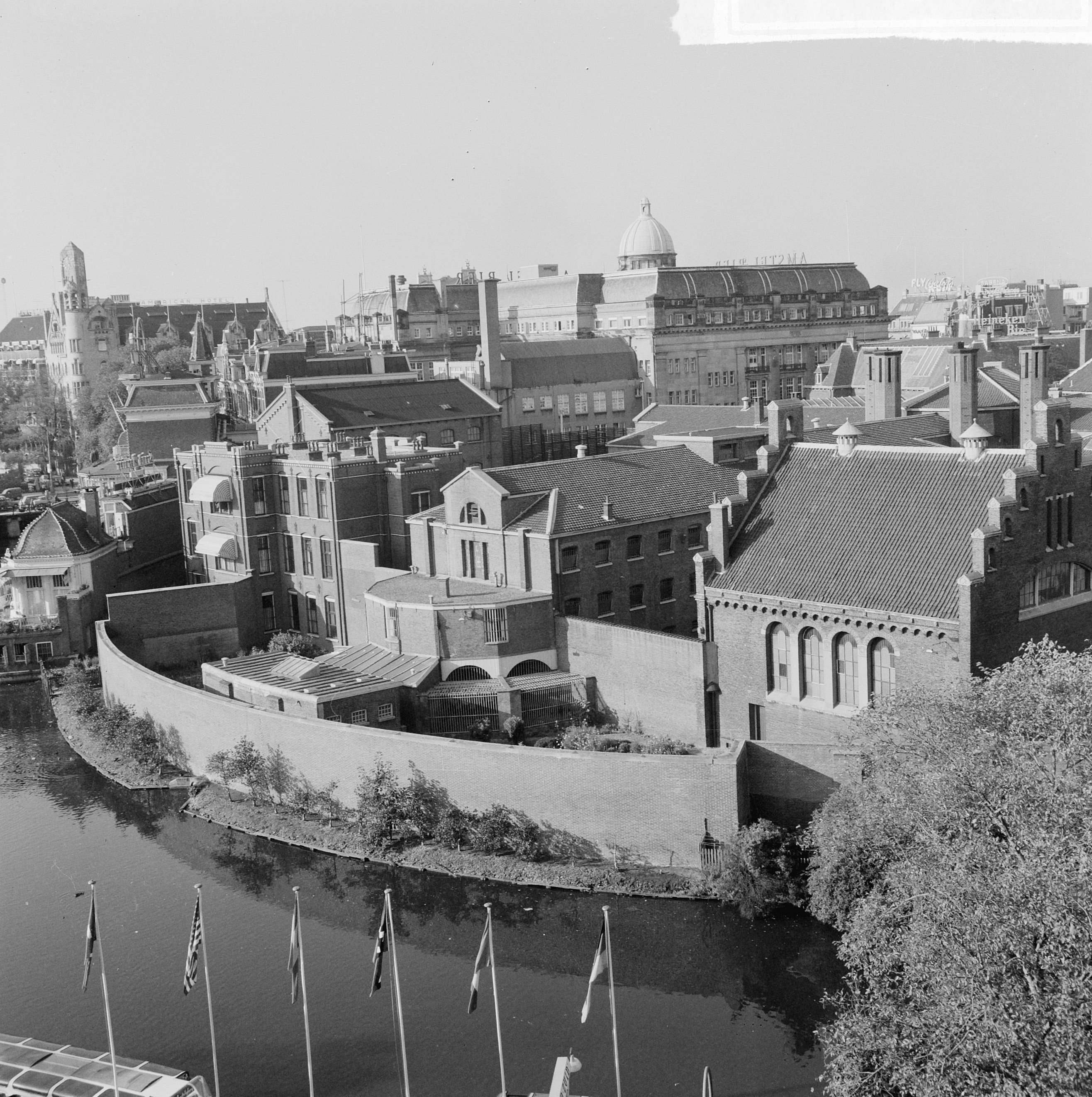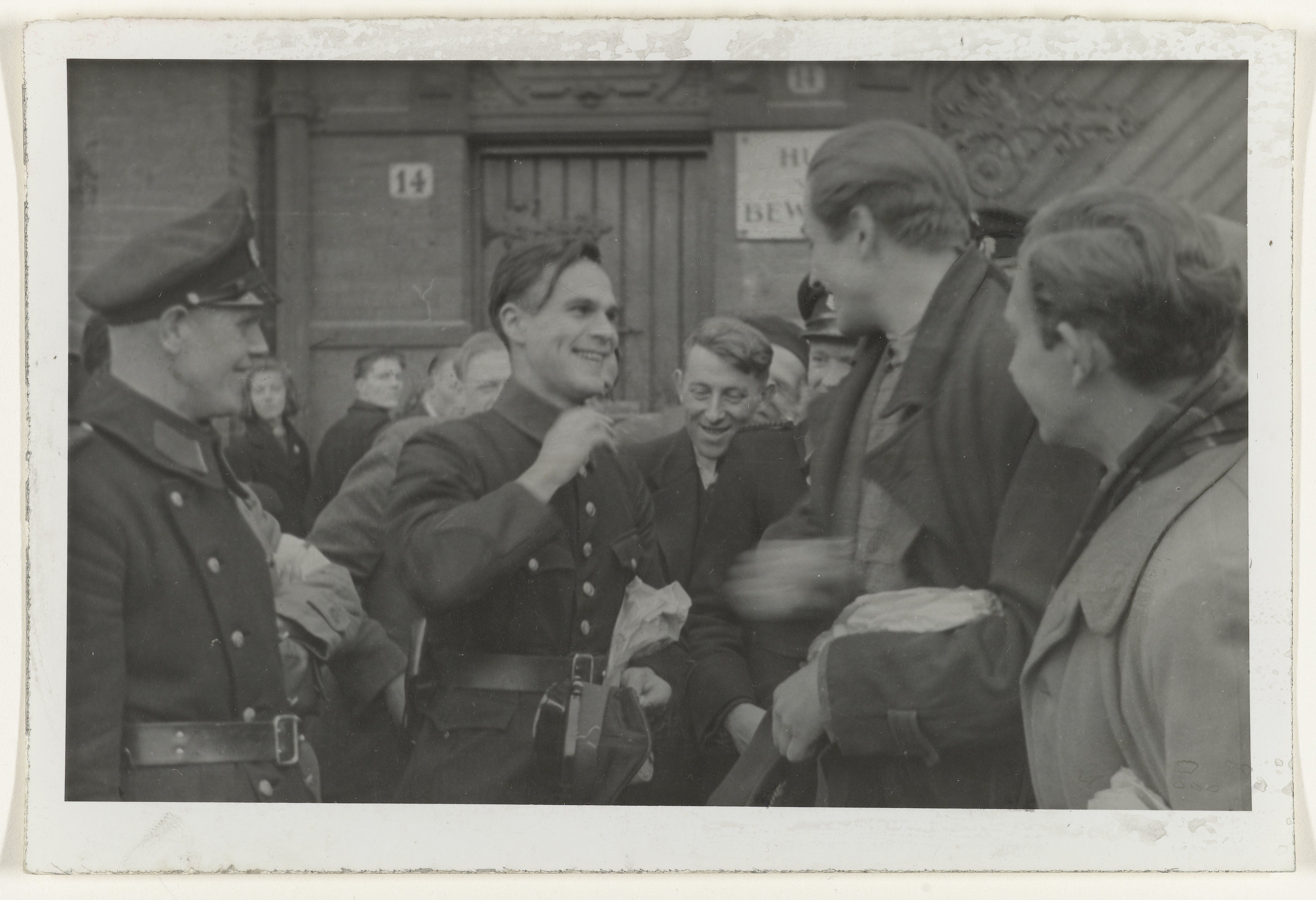The kick is always the hardest part. It drives, it directs, it moves, it calls out not be heard by ears but by the gut and the heart. Paradoxically, the kick is also easily neglected. The ear will gravitate to the hook and melody and as a track swings, the kick enters the background. Clichés aside, the same can be said for an old building. As director Martin Scorsese illustrates at the end of Gangs of New York, time and progress devour the stories of yore, pushing something that once meant so much to many into the background while shiny, new modernizations shout for attention.
By happenstance these two analogies coincided on our Damrak release: a kick drum so dominant it demands to be recognized, sampled from an archival sound that captured a monument’s last breath before Amsterdam’s commercial modernization devoured it.
The Huis van Bewaring was a prison located next to Amsterdam’s Leidseplein. Anyone visiting Amsterdam today can find it between the Paradiso concert hall and the Apple Store. The prison was constructed in 1850 and was the first penitentiary in the Netherlands, and marked a change in direction from the manual labor prisons that had been in use traditionally.
This new form of imprisonment was called the Pennsylvania system and aptly came from the United States. The Pennsylvania system adhered to the belief that solitary isolation made prisoners more repentant which prepared them better for their return to civilization once their sentence had been served. This style of prison was pioneered by the Eastern State Penitentiary in Philadelphia whose horrific history is worth reading about as well.

Huis van Bewaring in Amsterdam bore witness to horrific events in Dutch history. During World War II the prison was used to hold Jews and resistance fighters who were either sent to the camps to the east or taken out to the dunes in Overveen where they were executed. It’s reported that Jews were kept in a barn located in the prison’s courtyard without sanitation, and among the prison’s most known inmates were Anne Frank and her family who spent two days being held there after their capture in 1944.
In 1944 there were two raids on the prison. The first raid was conducted by Dutch resistance leader Gerrit van der Veen on May 1st. Van der Veen and a group of resistance fighters entered the prison on the morning of May 1 through a door opened by a compliant Nazi guard. However, reports say that one of Van der Veen’s group was startled by a guard dog, drew his gun, shot the dog awaking the sleeping wardens. Fleeing the prison, Van Der Veen was shot, paralyzing him. He was captured two weeks later and sent to execution at the dunes in Overveen.
Several weeks later, following the capture of resistance fighter Jan Wildschut, a second liberation was attempted. Resistance reports showed that 140 underground fighters were imprisoned at the Huis van Bewaring of which 70 were to be executed. Having none of that, renowned resistance fighter Johannes Post devised a plan with 15 others to liberate the entire prison.
Their inside man was an ex-SS soldier Jan Boogaard, who left the Eastern Front for a guard job at the prison. The soldier, fearing his fate at the end of the war and seeking some repentance would be granted a safe house and several thousand guilders by the Dutch resistance in return for his help in liberating the prison. In an effort to keep Boogaard from backing out they underground took his mother as collateral.
The plan was simple: Boogaard would get the two other guards drunk and poison the dogs with cyanide laced sausages. He’d then let Post’s team in to liberate as many of the underground resistance as possible. It was starkly similar to Van Der Veen’s plan but Post was confident that Boogaard would deliver.
However, as the plan drew closer things became less simple. Boogaard’s mother became uncooperative and the call from Boogaard, letting Post know the coast was clear, never came. Nevertheless, the team trusted Boogaard and entered the prison around 3:20 AM on July 15, 1944.
It was a trap. Boogaard had been a snitch the entire time he was pretending to help the resistance. The twelve men sent to liberate the prison were immediately spotted and shots rang out across the quiet, desolate Leidseplein. All hell broke loose. Some were able to scale the prison walls to the Leidseplein and several were wounded in the prison’s courtyard. They were all apprehended shortly after the failed raid.
Simultaneously, Boogaard’s mother had let a group of Nazis into her home to capture resistance fighter Betty Trompetter aka Tineke van der Laan. Van der Laan was in charge of keeping an eye on Boogaard’s mother while the raid occurred.
Johannes Post and Hilbert van Dijk did not take part in the liberation attempt but instead were in charge of transporting Boogaard and his mother to their safe house upon successful completion of the raid. When the time came, Post and van Dijk showed up at 144 Kinkerstraat where Van der Laan was already taken prisoner. Boogaard showed up at the agreed upon time but with German troops in tow. They took Post captive immediately while van Dijk fled despite being shot twice.
Hilbert van Dijk was later found in a garden not far away and the residents gave him up to the Germans. The attempt to free the Huis van Bewaring and its prisoners had failed again. The prison was an impenetrable fortress.
On July 16 all fourteen surviving members of the raid were transported to Overveen and executed by a 21-year-old SS soldier and buried in a mass grave. This soldier, Johan Willem Snoek, would later go on to commit suicide at the end of the war.
But upon first glance, or even second glance, it’s impossible to identify the structure as a prison or a memorial for that matter. For the average person it’s just another building to be unassumingly passed by.
Before it was closed however, a field recordist was granted access to the empty prison where he and a colleague captured the last sounds of this building. Among these sounds was that of a cell door slamming. In the cold, cavernous concrete cell blocks, this sound rumbles and bangs giving life to a mammoth of a kick drum. This sound was included in the Amsterdam Sample Pack that 10 artists turned into our Damrak compilation.
Both PYUR and Cocktail Party Effect make prominent use of this sound on their respective tracks and while it’s a thunderous kick drum, they had no idea the history behind the building where the recording was made. It folds into the track and the compilation: just another sound in a city of endless noise, but there’s always more behind the beat.
